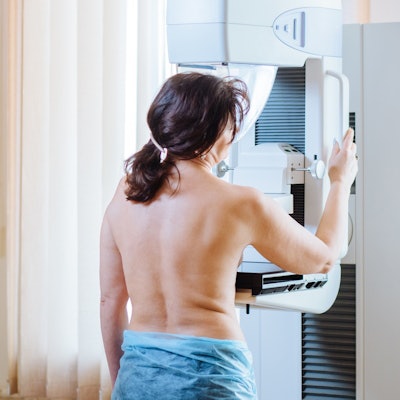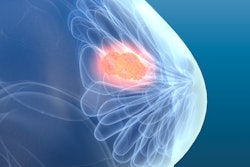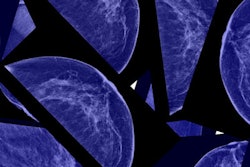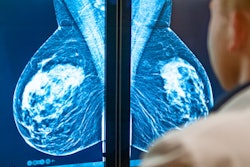
Younger women with a family history of breast cancer are at higher risk of having dense breast tissue on mammography, meaning higher risk of developing breast cancer, according to research published February 17 in JAMA Network Open.
Researchers led by Dr. Yunan Han from the Washington University School of Medicine in St. Louis found that volumetric percent density and the odds of having dense breasts were significantly higher in women with family history compared to those without family history.
"The findings highlight the heritable component of mammographic breast density and underscore the need to begin annual screening early in premenopausal women with a family history of breast cancer," Han's team wrote.
Both family history of breast cancer and higher breast density are known risk factors for women developing breast cancer later in life. Younger, premenopausal women have denser breasts since hormonal changes cause mammographic breast density to slowly decrease with age.
The researchers hypothesized that since mammographic breast density and breast cancer share similar genetic pathways, family history of breast cancer may be linked to a higher risk of having dense breasts.
Few studies explore this idea, however, thus leading Han et al to lead this effort. They wanted to find out the association between family history and mammographic breast density in premenopausal women, as well as see whether these associations differ by the type of mammographic breast density measure used.
For quantitative measures, the team used a commercially available software application for assessing breast density (Volpara version 1.5, Volpara Health) while using BI-RADS for qualitative measures. The group also investigated whether race changes these associations.
The researchers looked at data from a total of 14,415 premenopausal women with an average age of 47.1 years. They were split into two groups, 375 in a discovery set and 14,040 in a validation set. Data from the discovery set was collected between December 2015 and October 2016, while data from the validation set was collected between June 2010 and December 2015.
The study authors found that women in the discovery set who had a family history of breast cancer were more likely to have a higher average volumetric percent density at 11.1% than those without family history at 9%.
Volumetric percent density was 25% higher with an odds ratio of 1.25 in women with a family history of breast cancer when multiple variables were accounted for. It was also 24% higher with an odds ratio of 1.24 in women who had one affected relative. However, density was not significantly higher in women who had at least two affected relatives (odds ratio) compared with women with no relatives affected.
The researchers found similar trends in the validation set. Here, women with a positive family history of breast cancer were more likely to have dense breasts at 41.1% for BI-RADS 3 compared with those with no family history at 38.8%. For BI-RADS 4, the same trend was found (10.5% vs. 7.7%).
Women with family history of breast cancer in the validation set also had 30% higher odds of having dense breasts for BI-RADS 3 and 4 when multiple variables were accounted for, the study authors wrote. Women with one affected relative also had 29% higher odds of dense breast tissue with an odds ratio of 1.29. However, this was not found to be significantly higher in women with at least two affected relatives compared to women with no affected relatives.
The team also wrote that findings were similar for non-Hispanic white and Black or African American women.
Researchers wrote that their study adds new information about the association between family history of breast and breast density since they focused on premenopausal women and excluded women with any history of cancer. Previous research the team cited included women with a personal breast cancer history.




















